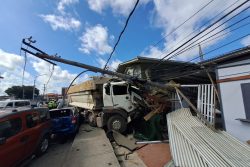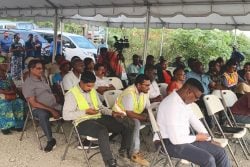Breaking Down the Sexual Offences Act
I took a break last week to give a snapshot of how the law of criminal contempt works in Guyana’s court system.
I will deal more fully with the law of contempt subsequently, but for now I will return to breaking down the Sexual Offences Act, Cap 8:03, Laws of Guyana (“the SOA”) by examining section 44. On August 25th we examined section 43 of the SoA, which dealt with the abolition of paper committals in sexual offences matters.
Section 44 of the SoA relates to the creation of sexual offences courts.
Section 44 of the SoA tasks the National Task Force for Prevention of Sexual Violence (this task force is established by section 87(1) to make proposals for the creation of special court environments to be used to try sexual offences. In Guyana, these are known as sexual offences courts.
Now, why is there a need for a sexual offences court? I addressed this question in a previous article in this column, but I will do so here again for convenience.
The purpose of a sexual offences court is largely to protect the alleged victim. It also serves the purpose of enhancing the likelihood of successful convictions.
Sexual offences, especially instances involving rape can have deep emotional and psychological effects on victims, some of whom might be triggered if they see the accused. Additionally, retelling the details of such an offence can be difficult, and even problematic.
Guyana’s courts have tried to address this as much as possible. As such, sexual offences courts have been established in all three counties (Demerara, Essequibo and Berbice). In all of these courts, there are separate rooms from which an alleged victim can give testimony. The court is fitted with cameras to allow the alleged victim to see inside the courtroom. However, no one inside of the courtroom, including the accused, can see the alleged victim. Additionally, social workers are provided to sit with and monitor and comfort the alleged victims as they give testimony.
The rationale behind these innovations is that alleged victims would be more willing, and better capable of giving clear testimony if they are in an environment where they feel safe and protected.
The efficacy of these courts has not been researched so we can only speculate about their effectiveness.
Additionally, there are no such courts in the magistracy to handle sexual offences which are tried summarily. This will have to be examined.
For now, anecdotal evidence shows that some of the alleged victims who have used these facilities have felt safer, and some of those proceedings have resulted in convictions.
The establishment of sexual offences courts is therefore a win for victims of sexual offences, and for Guyana.






